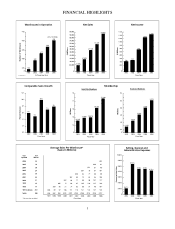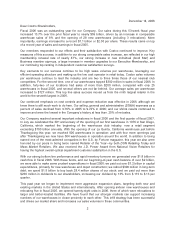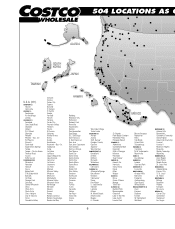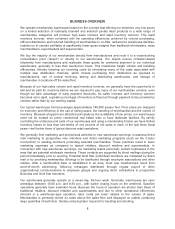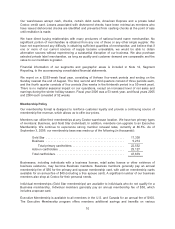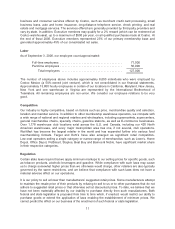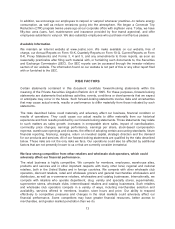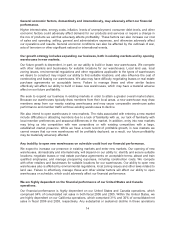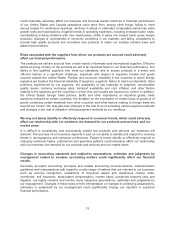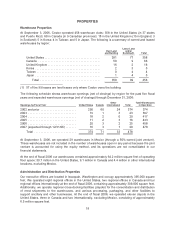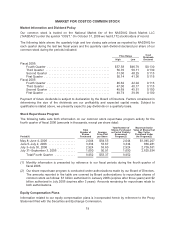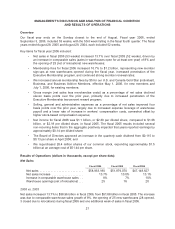Costco 2006 Annual Report Download - page 13
Download and view the complete annual report
Please find page 13 of the 2006 Costco annual report below. You can navigate through the pages in the report by either clicking on the pages listed below, or by using the keyword search tool below to find specific information within the annual report.
business and consumer services offered by Costco, such as merchant credit card processing, small
business loans, auto and home insurance, long-distance telephone service, check printing, and real
estate and mortgage services. The services offered are generally provided by third-party providers and
vary by state. In addition, Executive members may qualify for a 2% reward (which can be redeemed at
Costco warehouses), up to a maximum of $500 per year, on all qualified purchases made at Costco. At
the end of fiscal 2006, Executive members represented 23% of our primary membership base and
generated approximately 45% of our consolidated net sales.
Labor
As of September 3, 2006, our employee count approximated:
Full-time employees ........................................ 71,000
Part-time employees ........................................ 56,000
Total employees ....................................... 127,000
The number of employees above includes approximately 8,000 individuals who were employed by
Costco Mexico (a 50%-owned joint venture), which is not consolidated in our financial statements.
Approximately 13,800 hourly employees in certain of our locations in California, Maryland, New Jersey,
New York and one warehouse in Virginia are represented by the International Brotherhood of
Teamsters. All remaining employees are non-union. We consider our employee relations to be very
good.
Competition
Our industry is highly competitive, based on factors such as price, merchandise quality and selection,
location and member service. In addition to other membership warehouse operators, we compete with
a wide range of national and regional retailers and wholesalers, including supermarkets, supercenters,
general merchandise chains, specialty chains, gasoline stations, as well as E-commerce businesses.
Over 1,178 warehouse club locations exist across the U.S. and Canada, including our 426 North
American warehouses, and every major metropolitan area has one, if not several, club operations.
Wal-Mart has become the largest retailer in the world and has expanded further into various food
merchandising formats. Target and Kohl’s have also emerged as significant retail competitors.
Low-cost operators selling a single category or narrow range of merchandise, such as Lowe’s, Home
Depot, Office Depot, PetSmart, Staples, Best Buy and Barnes & Noble, have significant market share
in their respective categories.
Regulation
Certain state laws require that we apply minimum markups to our selling prices for specific goods, such
as tobacco products, alcoholic beverages and gasoline. While compliance with such laws may cause
us to charge somewhat higher prices than we otherwise would charge, other retailers are also typically
governed by the same restrictions, and we believe that compliance with such laws does not have a
material adverse effect on our operations.
It is our policy to sell at lower than manufacturers’ suggested retail prices. Some manufacturers attempt
to maintain the resale price of their products by refusing to sell to us or to other purchasers that do not
adhere to suggested retail prices or that otherwise sell at discounted prices. To date, we believe that we
have not been materially affected by our inability to purchase directly from such manufacturers. Both
federal and state legislation is proposed from time to time which, if enacted, would restrict our ability to
purchase goods or extend the application of laws enabling the establishment of minimum prices. We
cannot predict the effect on our business of the enactment of such federal or state legislation.
11


